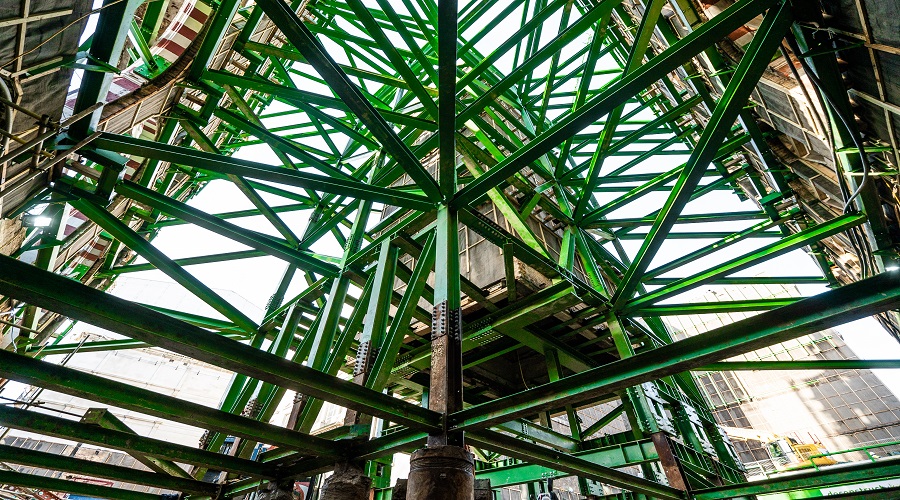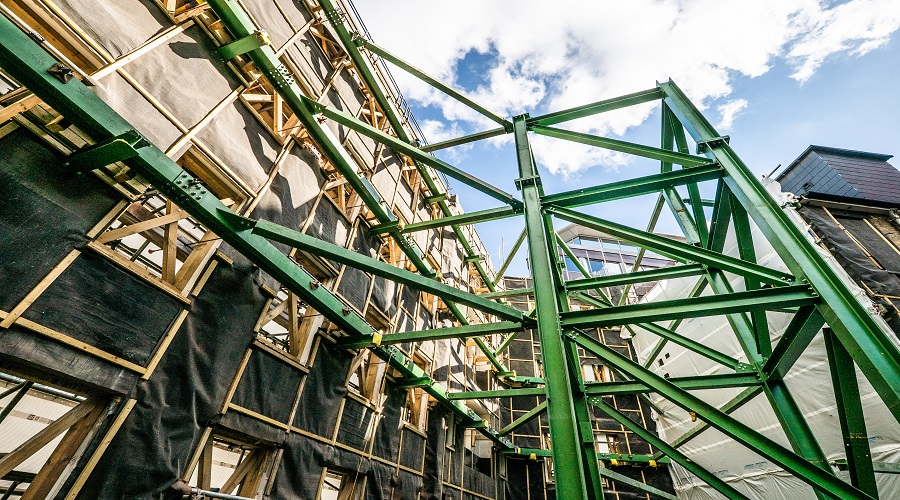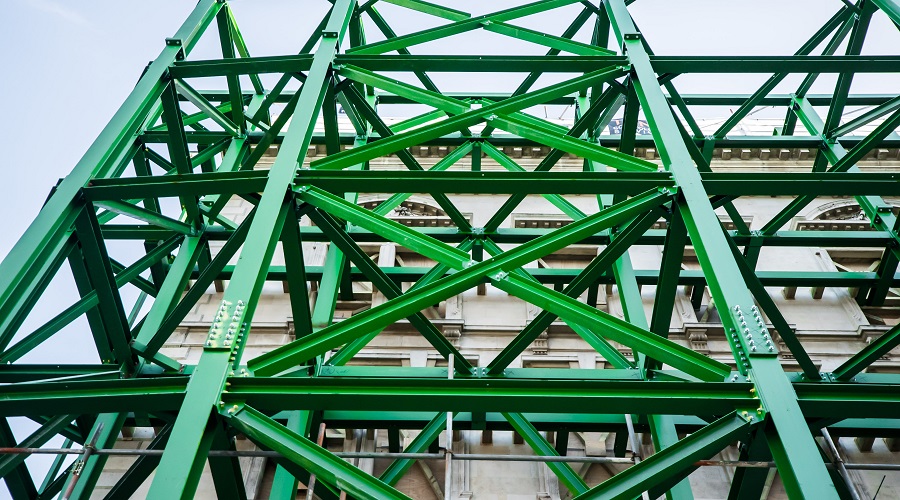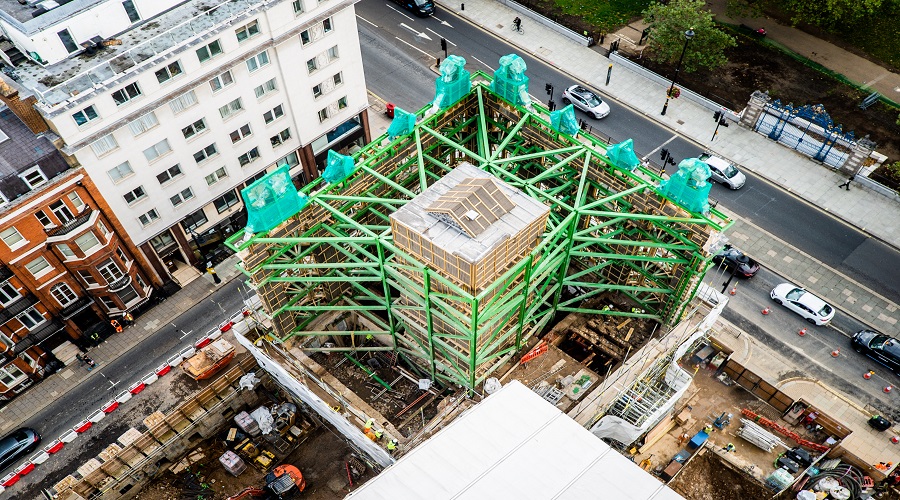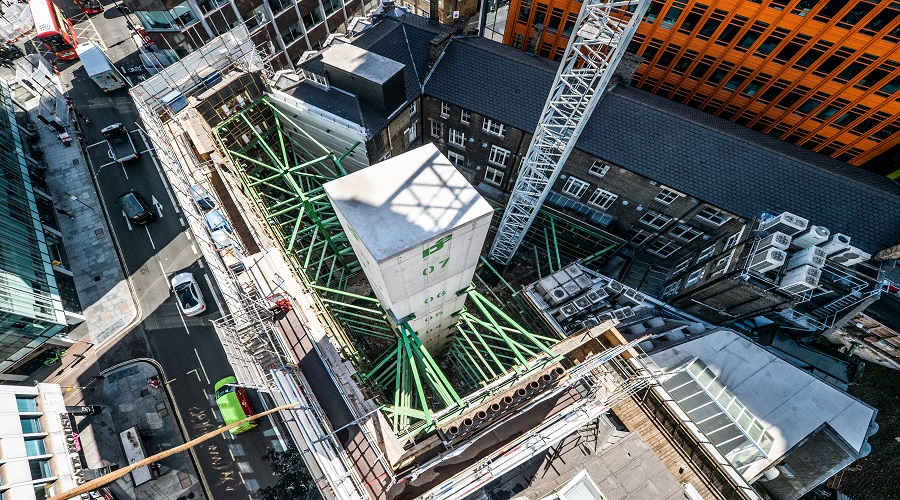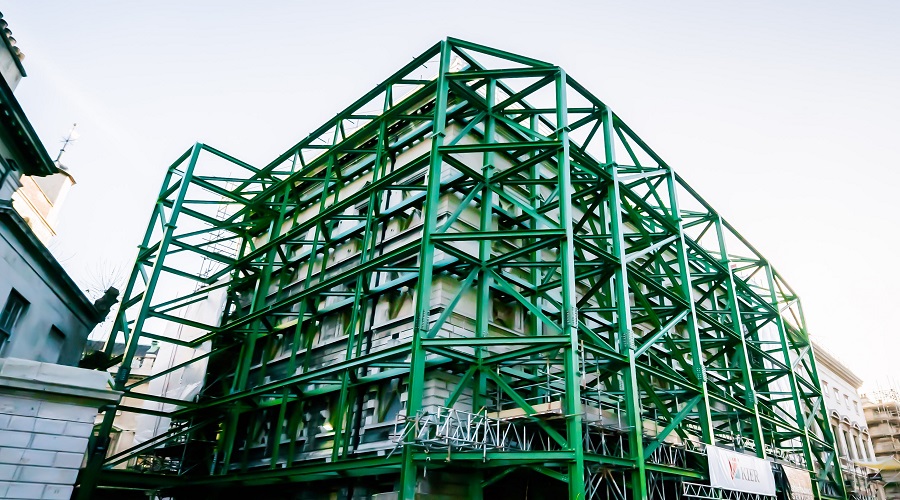Sustainability has become increasingly central to our operations and is now a key non-negotiable. “Temporary to temporary” and “temporary to permanent” re-use of steelworks at our Cambridge House project in central London exemplify this circular economy philosophy. Encompassing demolition, stabilisation, above- and below-ground works, and both concrete structure and new steel and concrete superstructure works, the £75 million Cambridge House scheme is one of Deconstruct’s flagship projects.
Some 75 tonnes out of 480 tonnes of steelwork at the façade retention project at 90-93 Piccadilly have been reused or recycled from our previous project at Medius House Tower. Better still, this recycling wasn’t just confined to steel utilised in temporary works — it was also used in the production of the new permanent steel roofing system on level four of the building. As part of the façade retention works, the majority of the re-used members were used to tie the retained stair core to the external perimeter waler.
The images below show details of Cambridge House, Castlewood and Medius House and St Bartholomew’s Hospital steelwork:
The existing façade retention system was removed in stages as the new concrete structure progressed. As they became available, steel members were then returned as stock to be held in our yard. Careful assessment of the designs enabled us to identify further opportunities to re-use sections in the primary roof structure. Existing end connections were cut and removed, bolt holes were filled in, the existing company branded primer was blasted and members re-fabricated and re-primed in readiness for being installed on site.
Ending up as key components of the permanent works scheme at Cambridge House, this project represents the latest stage in the life cycle of many of these steel members, which can be traced back through adaptation from the previous Medius House project to their use as part of the façade retention system at St Bartholomew’s Hospital.
As both an ISO 14001 certified company and affiliated members of SteelZero and the British Constructional Steelwork Association, re-use of steelwork is a fundamental element of our impressive green credentials. Committed to procuring, specifying and stocking 100% net zero steel by 2050 at the latest, Deconstruct are the only enabling works company to have signed up to the SteelZero initiative, and join other affiliated businesses in championing circular economy principles and leading the way to a greener construction sector.
The images below show details of Cambridge House, Castlewood and Medius House and St Bartholomew’s Hospital façade retention:
Recycling steelwork through re-use
Some 35% of our temporary steelwork is currently recycled through re-use. More than 100t of steel members held in our yard as stock stand as testament to our recycling efforts and illustrate the scale not only of the demolition, temporary and primary works that we undertake, but also the vast amount of steel we’ll be refabricating and re-using in future projects.
Discover more about our steelwork solutions.

